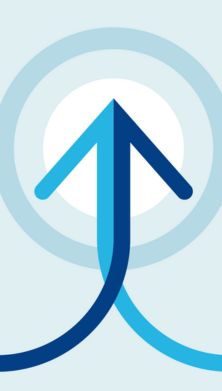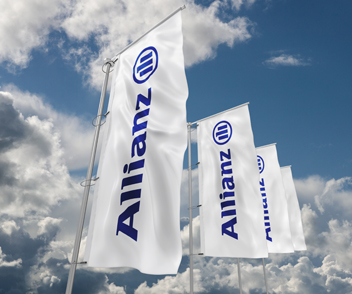Today, the value of a growing number of companies is primarily determined by intangible assets: patents, intellectual property, customer data, IT and software, networks and supply chain, brand image or reputation. In 1975, only 17 percent of the value in the S&P 500 market represented intangible assets, according to an analysis of Ocean Tomo. In 2015, that figure grew to 84 percent, or around $20 trillion of value. Former Lloyd’s CEO Inga Beale puts it in a nutshell: "Today, companies' valuable assets are more in the cloud than in the warehouse.”
Insurers have to step up to meet this challenge. They must strive to find new ways to help companies manage a new palate of risks that did not exist in previous generations, along with those risks that are yet to emerge - who knows what further changes we will see in the next decade. Insurers are expected to provide tailored insurance to cover a range of costs and loss of value, such as costs of investigation, communication and remediation, and loss of operating income due to business interruption or reputational risk.
Captives can play an important role
Keeping in mind that not every business risk is insurable through regular policies – as dramatically demonstrated by the global Covid-19 outbreak– we, as insurers, have to find new ways to help our clients manage their risks. Captives are useful tools as companies work with the insurance market to innovate. Broadly speaking, alternative risk transfer concepts are well placed to lead the evolution of the insurance industry in this direction thanks to their adaptability to specific client needs.
Corporates could also expand their thinking and nurture innovation through risk retention groups or industry mutuals. Protection and Indemnity Clubs for liability exposures in the shipping industry are a good example of such an approach where, through a pooling arrangement, the first level of “risk-atomization” takes place within the industry. In a second step, the risk is further “atomized” by reinsuring certain risks with professional (re)insurers. This leads to a good alignment of interest among the parties when it comes to emerging risks.
Captives are usually well integrated within the overall corporate risk management framework; hence, they are used to addressing the specific needs of their owners. Many of the risks around intangible assets are highly specific to individual companies, making intimate knowledge of that business, rather than of the broader sector, a tremendous advantage. When taking on such risks, however, captives still need to manage the inherent potential volatility.
In order to do so, captives can partner with an alternative risk transfer carrier without fear that proprietary information and internal data will become publicly accessible. When it comes to the problem of identifying and quantifying potential emerging risks, partnering with someone who has the relevant skillset, experience, and flexibility can lead to a competitive advantage.
AGCS’s Alternative Risk Transfer (ART) line of business works with companies to ensure that they harness the full potential of their captives, identifying which risks can be transferred to the captive to optimise its use of capital and solvency ratio and to reduce volatility. Several companies have started using non-conventional, (re)insurance structures to protect their intangibles assets. For instance, companies can effectively centralize, manage, and plan for these risks through their own captive insurance programs. Examples of such risks include product recall and business interruption due to cyber events, supplier failure, regulatory action or other, similar, indirect events. ART can provide fronting services for captive programs as well as reinsurance protection to manage peak risks. Furthermore, we have also worked with companies to provide “virtual captive” solutions, where companies can achieve many of the risk management and risk financing benefits of a captive, without having to set up a dedicated captive (re)insurance company.
The virtual captive concept allows for an extension of the Enterprise Risk Management (ERM) toolbox, preserving management autonomy as with a real captive, but allowing for the generation of self-retention capabilities over time and developing tailored coverage of risks that are traditionally excluded. It further increases the stability of planning by reducing the client’s P&L volatility with a significantly lessened capital cost compared to that of setting up and managing a separate captive. This may, additionally, contribute to improved management of debt finance terms (covenants) in certain cases. For virtual captives, the management of an internal insurance program is delegated to an external provider, typically a (re)insurance company, to leverage the benefits of captive programs while freeing up scarce resources in the insurance departments of parent companies.
Regulators play a part in helping captives protect their parents against emerging risks. Regulations like Solvency II currently make no distinction between captives and larger commercial providers, although captives do not sell insurance to the general market, making the provisions around consumer protection somewhat redundant. Revising the rules to take account of this fact would reduce compliance costs for captives, encouraging more businesses to use them and making it easier for existing captives to develop new products for their owners. In the absence of such regulatory reform, companies may look at other structures, such as virtual captives, as a cheaper way of accessing associated benefits.
Adapt and survive
Commercial insurance providers are evolving to meet new demands. The insurance industry’s focus tends to be on risk transfer through standardized Property & Casualty solutions, but the challenge at hand is far bigger. The most effective form of risk management is risk prevention. Insurers and brokers need to develop better ways to help their clients better understand risks and prevent losses. Services provided through a partner network can also assist companies when a crisis happens by identifying the extent of the crisis more quickly and by providing professional crisis management support.
A new innovation approach is needed, too. In the past, the industry tended to be product-focused rather than problem-oriented; the idea was to build products first and then find the problem which they could solve. There is no future in this approach. The industry needs to look at the problems first and then develop products that address those problems. When developing a blockchain solution for captive fronting programs, Allianz works closely with clients, spending time interviewing them for feedback, building prototypes, and then seeking even more feedback.
Any new insurance model requires even greater levels of engagement and collaboration between the insurer and the insured as well as with highly-specialized Insurtech and risk modelling companies. Partnerships are and will continue to be at the heart of most truly innovative risk transfer solutions as today’s challenges can no longer be tackled in isolation.
















